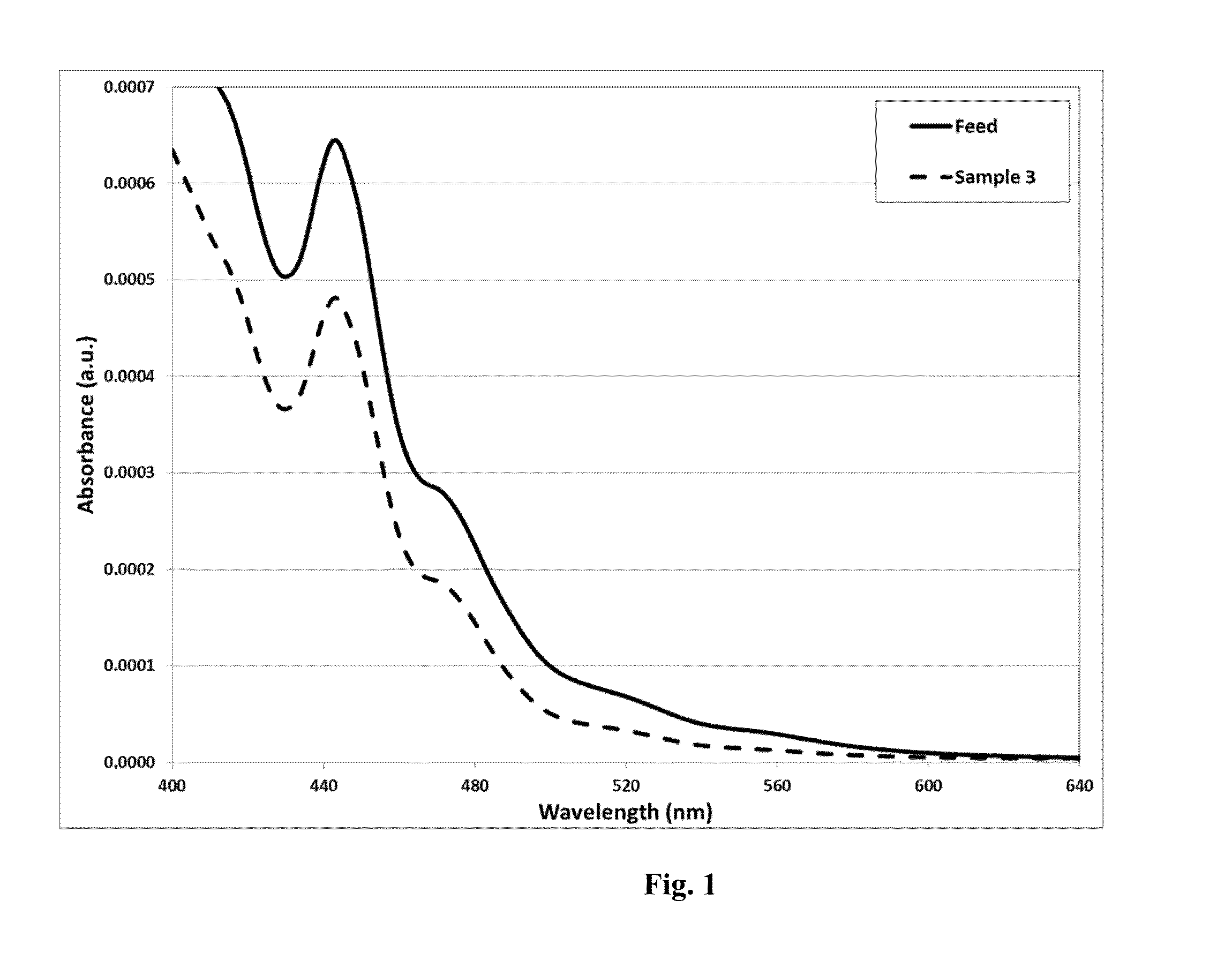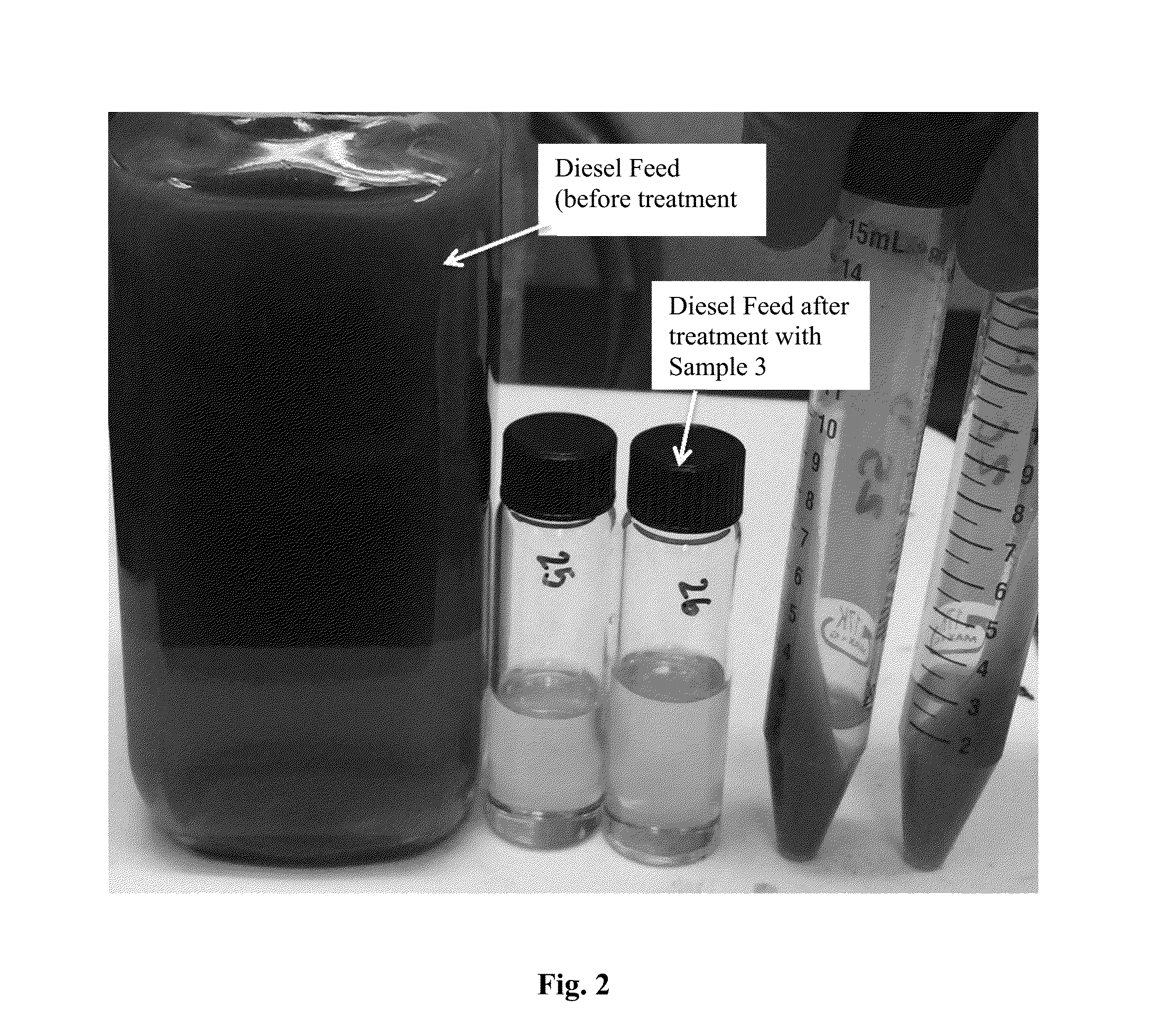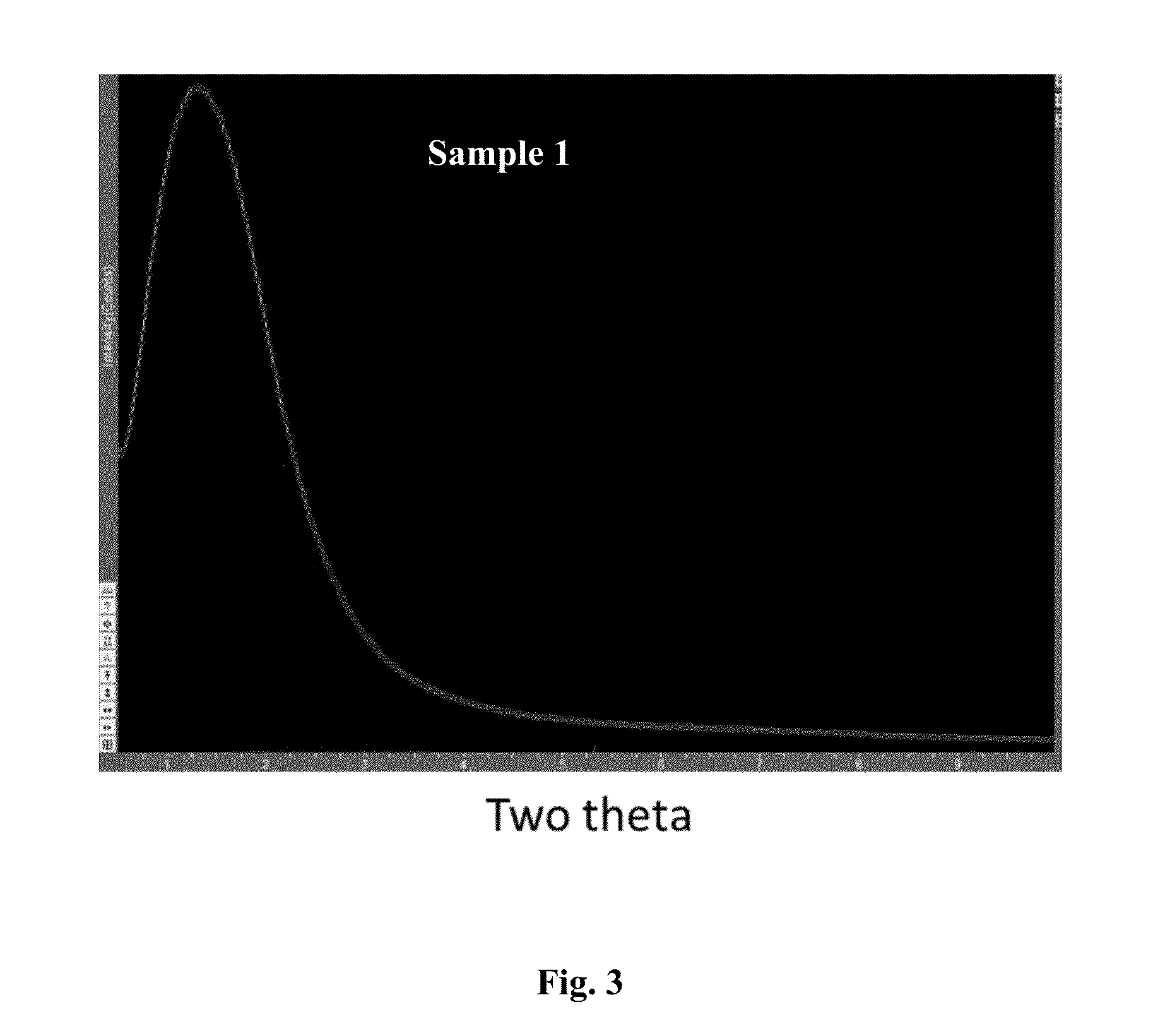Organosilica materials and uses thereof
a technology of organic materials and materials, applied in the field of organic materials, can solve the problems of limiting the ability to scale-up the process for industrial applications, requiring a complicated process to eliminate, and reducing the application range of organic materials, etc., and achieve the effect of reducing the number of organic materials
- Summary
- Abstract
- Description
- Claims
- Application Information
AI Technical Summary
Benefits of technology
Problems solved by technology
Method used
Image
Examples
example 1
Organosilica Material Syntheses using Formula (Ia), Formula (IIa) and / or Formula (IIIa)
1A. Synthesis using tris(3-trimethoxysilylpropyl)isocyanurate.
[0506]A solution with 6.23 g 30 wt. % NH4OH and 7.92 g DI water (53 mmol NH4OH; 682 mmol H2O) was made. To the solution 1.53 g of tris(3-trimethoxysilylpropyl)isocyanurate (2.5 mmol) was added to produce a solution having the molar composition:
[0507]2.5 tris(3-trimethoxysilylpropyl)isocyanurate : 53 NH4OH: 682 H2O which was stirred at 22-25° C. for 1 day. The solution was transferred to an oven and kept at 70-75° C. for 1 day to produce a gel. The gel was dried in a vacuum at 120° C. overnight (16-24 hours) and Sample 1 was obtained. No surface directing agent or porogen were used.
[0508]XRD Analysis
[0509]XRD was performed on Sample 1. The XRD pattern of Sample 1 is shown in FIG. 4.
[0510]Nitrogen Adsorption / Desorption Analysis
[0511]Nitrogen adsorption / desorption analysis was performed on Sample 1, and the results are provided in Table 1 ...
example 2
Batch Adsorption Experiment on Discolored Diesel Product
[0521]Experiments were done on a Perkin Elmer Lambda 850 UV-Vis spectrophotometer with Scantraq software by FTG. Samples were analyzed at room temp (˜15-25 C) in a ˜1 mm flow cell. If necessary, samples may be combined with cyclohexane in solution.
[0522]Sample 3 was tested in batch adsorption experiments on a discolored diesel product which was generated by high-temperature hydroteating of an on-spec diesel product. The feed color was measured according to ASTM D6045. The properties of the neat feed are shown below in Table 2.
TABLE 2High-temperatureHydrotreated DieselPropertyProductColor Level (D6045 ASTML5.0Method)Sulfur (ppm)2.8Total Nitrogen (ppm)0.2PARAFFINS (wt. %)5.611-RING NAPHTHENES (wt. %)12.182+ RING NAPHTHENES (wt. %)38.221 RING AROMATICS (wt. %)29.892 RING AROMATICS (wt. %)8.413+ RINGS AROMATICS (wt. %)5.69TOTAL NAPHTHENES (wt. %)50.41TOTAL AROMATICS (wt. %)43.98
[0523]The reduction of multi-ring aromatic compounds i...
PUM
 Login to View More
Login to View More Abstract
Description
Claims
Application Information
 Login to View More
Login to View More - R&D
- Intellectual Property
- Life Sciences
- Materials
- Tech Scout
- Unparalleled Data Quality
- Higher Quality Content
- 60% Fewer Hallucinations
Browse by: Latest US Patents, China's latest patents, Technical Efficacy Thesaurus, Application Domain, Technology Topic, Popular Technical Reports.
© 2025 PatSnap. All rights reserved.Legal|Privacy policy|Modern Slavery Act Transparency Statement|Sitemap|About US| Contact US: help@patsnap.com



